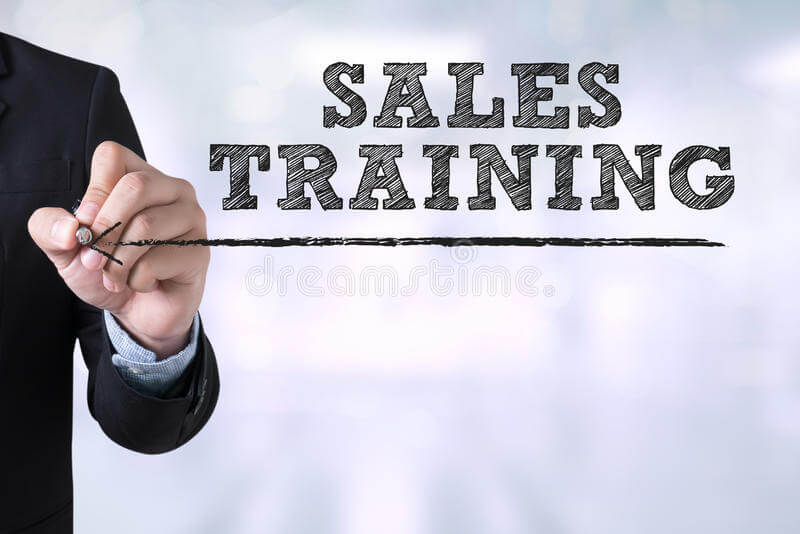How to Create a Successful Sales Training Program


In today’s competitive business landscape, a well-trained sales team is crucial to an organization’s success. A high-performing salesforce can drive revenue growth, increase market share, and build long-lasting relationships with customers. But how do you create an effective sales training program that enables your team to reach its full potential? In this comprehensive guide, we’ll walk you through the essential steps for developing a successful sales training program, from understanding your team’s needs to implementing ongoing support strategies.
Assess Your Team’s Needs and Set Clear Objectives
Before diving into the creation of your sales training program, it’s crucial to assess the current skills and knowledge gaps within your salesforce. Conduct a thorough analysis of your team’s performance, and identify areas for improvement. This information will help you set clear, attainable objectives for your training program.
Some common goals for sales training programs include:
- Improving product knowledge
- Enhancing communication and negotiation skills
- Developing better time management and organization abilities
- Boosting customer relationship management
Define Your Sales Training Curriculum
Once you’ve identified your team’s needs and set clear objectives, it’s time to define the curriculum for your sales training program. This should include a mix of instructional content, hands-on activities, and real-world scenarios to ensure that your team has a comprehensive understanding of the sales process. Consider incorporating the following topics into your curriculum:
- Product knowledge and value proposition
- Sales methodologies and best practices
- Prospecting and lead generation techniques
- Effective communication and negotiation strategies
- Customer relationship management and retention
Utilize a Blended Learning Approach
To maximize engagement and retention, it’s important to use a variety of training methods and formats in your sales training program. A blended learning approach combines traditional classroom-based instruction with online resources and interactive activities. This method allows your team to learn at their own pace, while also benefiting from collaborative and experiential learning opportunities.
Examples of blended learning strategies include:
- Instructor-led workshops and seminars
- Online courses and webinars
- Interactive simulations and role-playing exercises
- Peer-to-peer coaching and mentoring
Measure Success and Continuously Improve
To ensure the ongoing success of your sales training program, it’s essential to track progress and measure the impact of your training initiatives. Establish key performance indicators (KPIs) that align with your program objectives, and use these metrics to gauge the effectiveness of your training efforts.
Common KPIs for sales training programs include:
- Sales revenue growth
- Sales cycle length
- Conversion rates
- Customer satisfaction scores
Regularly review and analyze your training program’s performance data to identify areas for improvement, and make adjustments as needed to continually enhance your training content and delivery methods.
Provide Ongoing Support and Reinforcement
Creating a successful sales training program doesn’t end with the completion of an initial course or workshop. Providing ongoing support and reinforcement is crucial for ensuring that your team retains the knowledge and skills they’ve acquired during training, and can effectively apply them in real-world sales situations.
Some strategies for ongoing support and reinforcement include:
- Regular coaching sessions with sales managers
- Access to online resources and refresher courses
- Peer-to-peer learning and mentorship opportunities
- Incentive programs and recognition for top performers
Conclusion
A successful sales training program is the cornerstone of a high-performing sales team. By assessing your team’s needs, setting clear objectives, and implementing a comprehensive and engaging curriculum, you’ll empower your salesforce with the skills and knowledge they need to excel in today’s competitive marketplace. Utilizing a blended learning approach ensures that your team benefits from a variety of training methods, while ongoing support and reinforcement help to solidify their newly acquired skills.
Remember to continuously measure the success of your sales training program by tracking key performance indicators and making improvements as needed. By staying committed to the growth and development of your sales team, you’ll not only boost their performance but also create a positive and motivated work environment that fosters long-term success.
With a well-crafted sales training program in place, you’ll be well on your way to achieving higher revenue growth, improved customer satisfaction, and a salesforce that’s ready to tackle any challenge that comes their way. Start building your comprehensive sales training program today, and watch as your team’s performance soars to new heights!






Responses